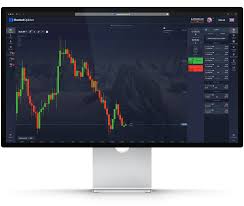
The World of Trading Pocket Option: Maximizing Your Success
If you’ve ever considered venturing into the world of trading, you may have come across the Trading Pocket Option Pocket Option platform. Known for its user-friendly interface and versatile trading options, Pocket Option is a prominent player in the realm of digital options trading. In this article, we’ll explore the ins and outs of trading on this platform, from understanding its features to implementing strategies that can enhance your trading experience. Whether you’re a seasoned trader or a newcomer, this guide will cover everything you need to know about trading Pocket Option effectively.
Understanding Pocket Option
Pocket Option is an online trading platform that specializes in binary options. It was established to provide a comprehensive trading experience that caters to both beginners and experienced traders. The platform offers a range of assets, including stocks, commodities, currencies, and cryptocurrencies, which gives traders plenty of options to choose from. One of the standout features of Pocket Option is its user-friendly interface, designed to facilitate a seamless trading experience for all users. It also provides a demo account for beginners, allowing them to practice trading before investing real money.
Key Features of Pocket Option
To fully appreciate what Pocket Option has to offer, it’s essential to examine its key features that distinguish it from other trading platforms:
- Variety of Assets: Traders can engage with various asset classes, including forex, stocks, cryptocurrencies, and ETFs, enabling diversified trading strategies.
- User-Friendly Interface: The platform is designed with ease of navigation in mind, making it accessible for beginners while also catering to advanced traders.
- High Payouts: Pocket Option offers competitive payouts on trades, with returns often reaching up to 92% depending on the asset and market conditions.
- Demo Account: A demo account option allows new traders to familiarize themselves with the platform, test strategies, and build confidence without financial risk.
- Multiple Trading Options: Traders can engage in various styles of trading, including high-frequency trading, different timeframes, and even social trading features that allow following experienced traders.
- Mobile Trading: With dedicated mobile applications for iOS and Android, traders can monitor their investments and execute trades on the go.
How to Get Started with Pocket Option
Getting started on the Pocket Option platform is a straightforward process. Follow these steps to begin your trading journey:
- Account Registration: Visit the Pocket Option website and complete the registration process by providing necessary personal information.
- Verification: Verify your account by providing the required identification documents, ensuring compliance with regulatory standards.
- Funding Your Account: Deposit funds into your trading account using one of the many payment options available, including credit cards, e-wallets, and cryptocurrencies.
- Explore the Demo Account: Before trading with real money, use the demo account to practice and test your trading strategies.
- Start Trading: Once you are comfortable, move on to live trading, implementing the strategies you’ve developed during your demo experience.
Effective Strategies for Trading on Pocket Option
To maximize your success on the Pocket Option platform, it’s crucial to adopt effective trading strategies. Here are some popular strategies used by successful traders:

1. Trend Following
Trend following involves analyzing the market trends and making trading decisions based on the direction of the trend. Traders can utilize various technical indicators, such as moving averages and Fibonacci retracements, to identify entry and exit points.
2. News Trading
This strategy revolves around making trades based on significant news events that can affect the market. Traders who use this strategy must stay updated with economic reports, financial news, and geopolitical events to predict market movements.
3. Reversal Trading
Reversal trading targets points where the market is expected to change direction. By using tools like candlestick patterns or divergence on oscillators, traders can identify potential reversal points to take advantage of price swings.
4. Scalping
Scalping is a short-term strategy where traders look to make small profits on rapid trades. This strategy requires a solid understanding of market movements and quick decision-making skills.
Managing Risks in Trading
Risk management is a crucial part of trading on Pocket Option. Adopting the following best practices can help you protect your investments:
- Set Stop-Loss Orders: Always set stop-loss orders to limit potential losses. This ensures that you exit trades once they reach a specific loss threshold.
- Use Proper Lot Sizes: Control the amount you invest per trade according to your overall trading capital, ensuring you do not risk too much on a single trade.
- Diversify Your Portfolio: Avoid putting all your money into one asset. Diversifying helps spread risk across different trades.
- Stay Emotionally Disciplined: Manage your emotions when trading. Avoid making impulsive decisions based on fear or greed.
Conclusion
Trading on the Pocket Option platform can be a rewarding venture if approached with the right strategies and a commitment to ongoing education. By understanding the platform’s features, implementing effective trading strategies, and practicing sound risk management, you can position yourself to succeed in the world of trading. Remember to start slowly, learn from your experiences, and continuously adapt your trading approach in response to changing market conditions. With dedication and practice, you’ll be well on your way to becoming a proficient trader on Pocket Option.